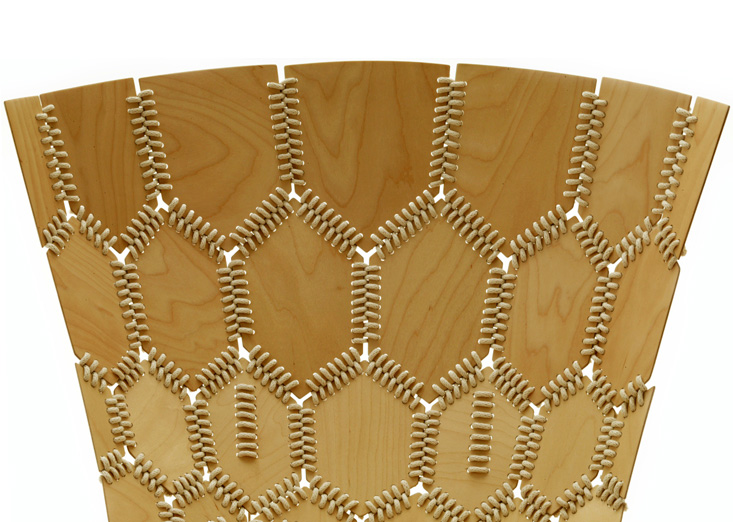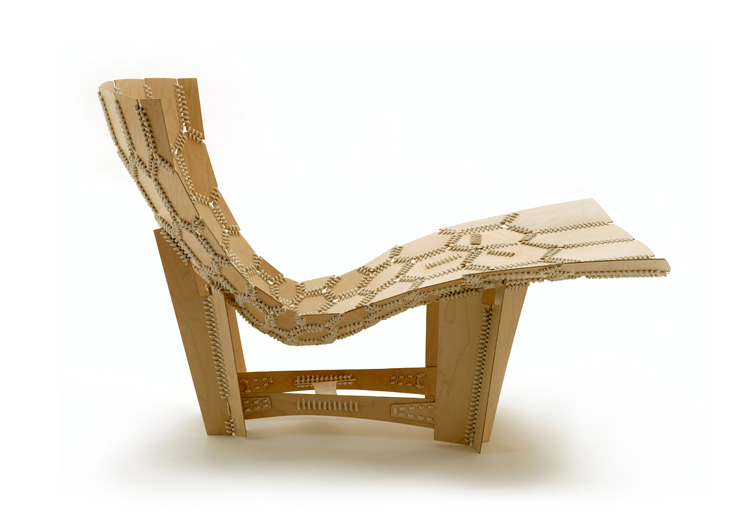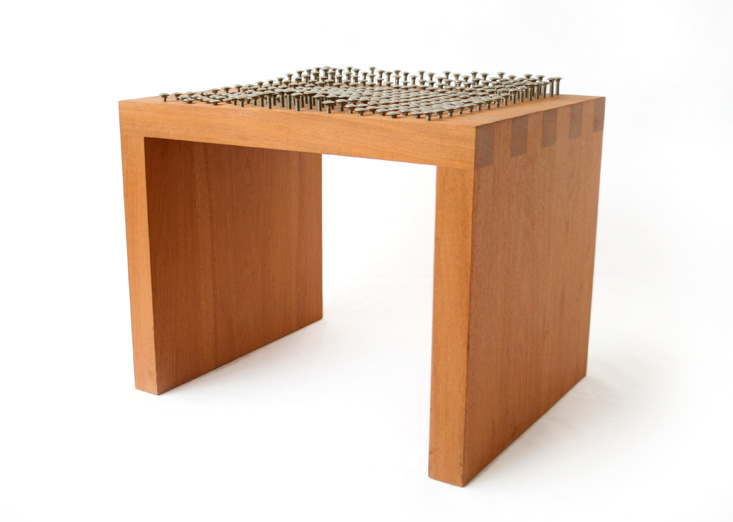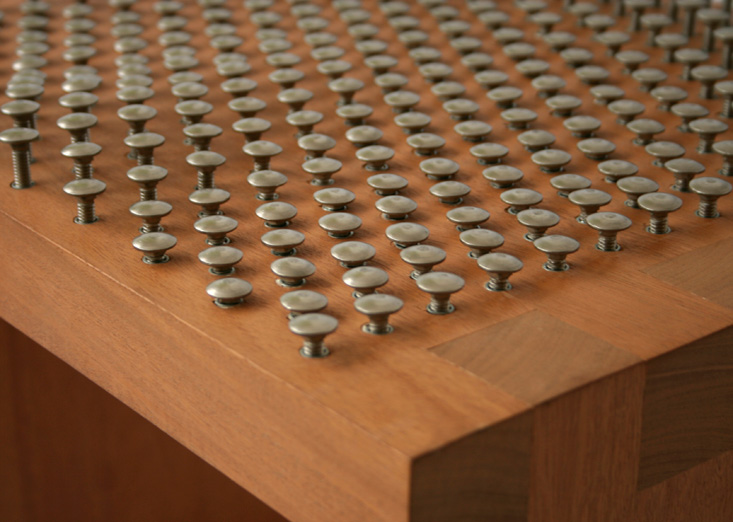Comfy Lounger Made of Knitted Leather

Knitting is rarely associated with anything but the most kitsch (or at least outdated) styles of furniture, used almost exclusively to cover pieces rather than hold them together. In this patchwork wooden lounge chair, however, the design strategy is entirely different: shaped wood strips are bound with tightly-wrapped rope material, their very structure dependent upon the fabric that fills the gaps.

The comfort benefits are intuitive and obvious: such a chair as a mixture of rigidity and flexibility from the high back to the bucket seat and sloped horizontal leg rest are. Even the supporting legs and connective frame below are tied rather than glued together.

“An ongoing project I’ve worked on since 2004 is the design of pieces made with knit pieces of wood,” says designer Emiliano Godoy. “This project started while studying my masters in industrial design at Pratt Institute in New York. I was researching vegetable based materials for design, and developing 100% biodegradable pieces. The Knit Chair was my first attempt at designing a furniture piece with this approach. I tried to accomplish this requirement while having a design language that would speak about the construction of the chair, and therefore its deconstruction.”

“The resulting aesthetic of the knit pieces is very compelling to me, as well as their conceptual origin. I think about sustainability as a design prerequisite, but the idea of a ‘Biological Future’ became a very powerful driving force because I think as a general framework it is futuristic and achievable, as well as simple and versatile. There are many reasons for this: by using biomass as the primary source for our energy and material needs we will contribute to reduce emissions of green house gasses, simplify our disposal and recycling infrastructure and deal appropriately with products for which no feasible collection currently exists.”
“Biomass is produced by living organisms that are tightly related to Nature’s life-supporting cycles, and its use within sustainable parameters would set the pace for industrial activity. Technological materials would be saved for applications where no biological material performs adequately, and their availability would be guaranteed for a longer period of time. Fewer regulatory and certification entities will be needed if capital production and waste recycling depends on efficient natural cycles, since industrial activities would rely on healthy ecosystems for their energy and materials supply.”

Along the same lines, Godoy also produced “Estudio,” a chair that looks and sounds a lot less comfortable than it really is. Its surface consists of many inlaid screws, the heads of which stick up to form the “cushion” of the seat. They’re arranged in such a way that they actually cradle the body ergonomically rather than being uncomfortable.

“Early studies in ergonomics were made using planks with rows of screws or bolts that were inserted at different height to create curved surfaces, where the designer could modify the shape until it was comfortable. The Estudio stool is basically a reinterpretation of these tools on a simple yet a bit more refined piece.”
“The stainless steel bolts can be screwed in or out to form compound-curves for a seating surface. This allows the user to design his/her seat, experimenting with shapes and minor modifications in the quest for the ultimate seat. The piece then becomes a studying tool, where the shape-finding process is more important than the outcome.”




